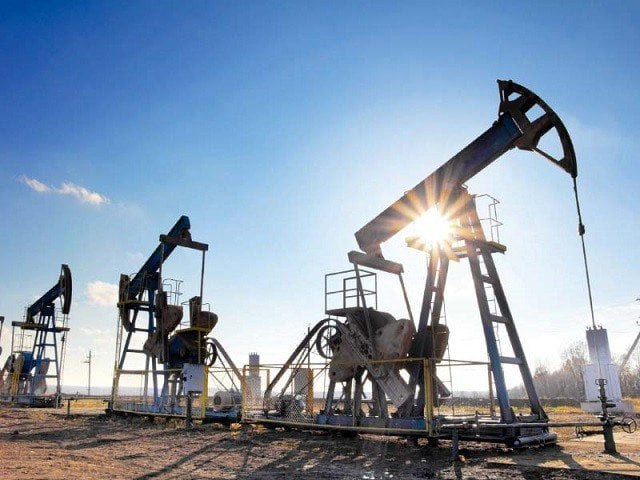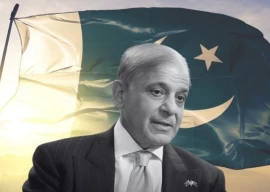
In South Asia, excluding Afghanistan, Pakistan has the lowest gasoline prices at $0.75 per litre. Bangladesh and India saw the highest price of $1.05. However, Sri Lanka saw the lowest diesel price of $0.57 — an outlier heavily subsidising diesel. This price is lower than that in the US. Otherwise, the lowest diesel price is in Bangladesh at $0.76 and the highest in India at $0.94. Afghanistan has the lowest petroleum prices as it benefits from low prices in adjacent Iran, Azerbaijan and Turkmenistan. The prices are also lower in Pakistan due to smuggling from Iran and the grey market.
While diesel prices are lower than gasoline prices everywhere in the world, the trend is opposite in Pakistan as it is taxed and priced higher than petrol. This makes the economy less competitive as commercial goods are transported on diesel-run vehicles. Some correction is required in this respect. Deemed duty, an already controversial issue, is loaded on diesel, exclusively. If at all, it must be equally loaded on gasoline and diesel which may change the relative prices and correct the imbalance.
Among the industrialised countries, the lowest petroleum prices are in the US as Europe taxes petrol heavily. The US is an oil producer, has a highly competitive and efficient oil market with the least taxes among the developed countries. Therefore, US prices can be taken as a benchmark around which the relative reasonableness of oil prices can be assessed. With this yardstick, petrol prices in Pakistan appear reasonable and closer to US prices. Due to the coronavirus slowing down China, international oil prices may remain lower, briefly providing some solace to the poor in this part of the world. In the past, the PML-N government tremendously benefitted from very low oil prices. In those times, taxes charged were almost the same as the import price.
There are, however, possibilities at the margin for differentiated prices in gasoline. Currently, 92 RON gasoline is being unnecessarily forced on motorcycles and older cars owners which have no use for it. For this sector, prices can be reduced by at least five rupees if lower RON gasoline is introduced for this segment which has a market share of 40-50%.
Nonetheless, due to the rupee devaluating from Rs100 to Rs155, prices jumped abruptly in the local currency along with general inflation and low growth. The petroleum and energy sector has been and continues to be one of the largest indirect taxation sources in a country where the rich do not pay income tax or pay minimally, thereby limiting the options for the government. The larger pricing issue would remain problematic in Pakistan when most commodities are priced in international terms while labour prices are among the lowest in the world.
Meanwhile, there is a huge cross subsidy to lifeline gas consumers who are provided gas practically free of cost, barely charging only T&D expenses. No other country provides such a relief. In Pakistan, there are six slabs in the domestic gas tariff which is unprecedented anywhere in the world. The idea is to match the gas tariff with the pockets of various economic strata, whereas India and Bangladesh have a single gas tariff slab in the domestic sector.
OGRA had proposed an average of 32% increase in gas prices over and above the recent gas price increase six months back. The rupee devaluation effect had already been absorbed in the last prices. We have mentioned in the case of electricity that an undue and hasty enthusiasm in cleaning the slate of subsidies, accumulated corrections and IMF injunctions has led to this OGRA proposal. The constant feature and source of higher prices is the Qatar LNG and not the LNG as such. International LNG prices have fallen to the level of wellhead prices. However, we cannot fully benefit from it as we have to purchase the Qatar gas under take-or-pay contract. Although, all three countries of the region are suffering under Qatar LNG as they entered into deals with Qatar simultaneously and at the same prices. India is less affected due to its larger gas market. Both countries thereby enjoy lower wellhead prices.
However, Bangladesh has been maintaining the lowest of world prices in its industrial gas tariff at $3.6 per MMBtu as opposed to $7.7 in Pakistan. Similarly, the highest domestic slab in Pakistan is 220% higher than in Bangladesh. However, this has been made possible for Bangladesh by maintaining a single price slab for the domestic sector without concessions for low income groups. However, gas prices in India are higher than in Pakistan. The highest domestic slab in Pakistan is priced at 78% of that in India. The industrial and commercial gas tariff in India is twice as much as that in Pakistan. One is not aware of any hidden subsidies that might be there in specialised sectors as we have in the case of zero-rated sectors. While there is no concession for lower income groups in Bangladesh, a subsidised LPG scheme exists in India.
As in the electricity sector, the gas sector suffers from T&D losses; no improvement appears to be possible in the near term in this respect. Contrary to popular notions, this is not a big ticket item either. The electricity sector may benefit from T&D loss reduction by 10% and the gas sector by 5% in terms of final prices if the losses are reduced by half-a-big achievement. The problem is that if prices are undercharged, it either worsens the gas companies’ financial problems or creates problems for its budgetary balances. However, the current problem appears to have been caused, at least partly, by undue haste in cleaning the slate amidst the present high inflation. There are a number of options here. Freezing gas prices may be restricted to domestic price slabs only. As for the fertilizer sector, it is already under a subsidy regime. Most of the fertilizer gas supplies are out of gas distribution companies’ (DISCO) pipeline gas prices any way. The financial impact of freezing gas prices may be shared by public sector gas producers, the GoP by reducing GST and gas DISCOs. It is a difficult situation indeed.
Published in The Express Tribune, February 25th, 2020.
Like Opinion & Editorial on Facebook, follow @ETOpEd on Twitter to receive all updates on all our daily pieces.














COMMENTS
Comments are moderated and generally will be posted if they are on-topic and not abusive.
For more information, please see our Comments FAQ